locating windows to maximize natural light, providing a nature escape indoors. This article explores eight excellent ideas for your next greenhouse garden project. From the tranquil beauty of a pond to the dense foliage of a tropical rainforest and the stark elegance of a cactus desert, each idea aims to make your greenhouse a personalized paradise.
Focusing on layout and creative space use, these concepts utilize the unique advantages of a garden under glass, such as climate control and optimal light from well-placed windows. Get ready to discover the boundless possibilities in greenhouse gardening, where each idea allows you to craft a living masterpiece.
Citrus Grove
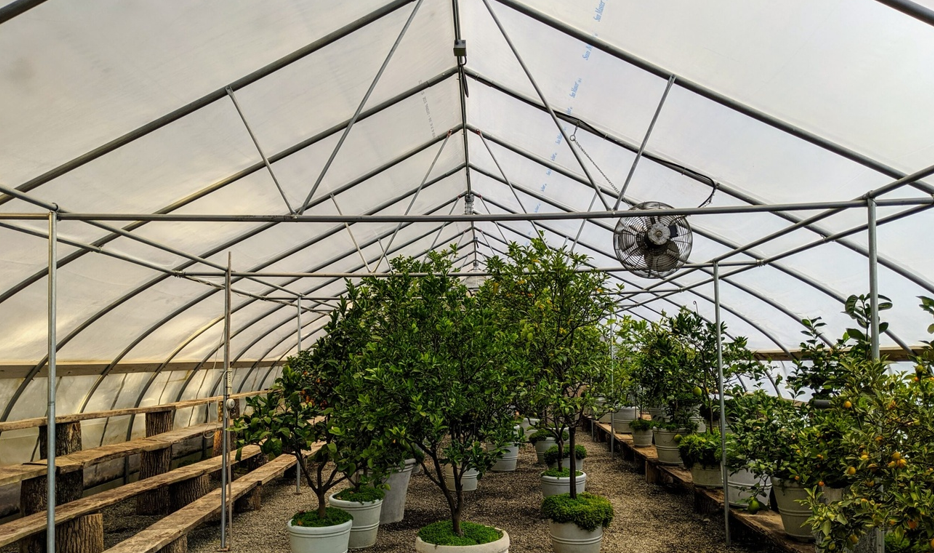
Citrus Grove Layout
Designing a Citrus Grove within a greenhouse involves strategic planning to accommodate the specific needs of citrus trees, particularly considering space and light requirements. Opting for dwarf citrus varieties is beneficial as they require less space and are easier to manage, making them perfect for more miniature or residential greenhouses.
These dwarf varieties still produce full-sized fruits and are ideal for container gardening, which adds flexibility in managing the greenhouse space.
Citrus Grove Trees
Citrus trees, such as oranges, lemons, and kumquats, are renowned for their ability to thrive under controlled conditions and offer a vibrant array of fruits. Selecting a suitable citrus tree variety is crucial, with many being self-fruitful, meaning only one tree is necessary for fruit production.
For those in colder climates, implementing a greenhouse can extend the growing season and allow cultivating citrus varieties that would otherwise struggle outdoors.
Citrus Grove Maintenance
Maintaining a Citrus Grove in a greenhouse requires diligent care, particularly in managing temperature and humidity. Citrus trees flourish in temperatures between 70°F and 90°F to thrive. Ensuring these conditions often involves supplemental heating systems during colder months and humidifiers or misting systems to maintain adequate humidity.
Additionally, container-grown citrus trees need well-draining soil and regular fertilization to support their growth and fruit production.
Bonsai Forest

Bonsai Forest Design
Creating a Bonsai forest requires careful selection of trees that can thrive in similar conditions, especially when light is limited. Opting for species that naturally grow in shaded environments or have similar light requirements can help achieve a harmonious look.
The design should mimic a natural forest, incorporating varying sizes of trees and arranging them to create depth and perspective.
Bonsai Forest Trees
Choosing trees of different heights and types can enhance the natural forest feel of a Bonsai forest. Certain types of maples and junipers are suitable species for low-light conditions, and they can coexist if carefully managed despite their different care requirements.
It’s crucial to select trees that complement each other in terms of growth rate and foliage to maintain balance and aesthetics for certain types of maples and junipers.
Bonsai Forest Maintenance
Maintaining a Bonsai forest involves meticulous care, particularly in adjusting light, watering, and soil conditions to suit each species. Regular pruning is essential to keep the forest manageable and visually appealing.
Additionally, monitoring the health of each tree is crucial to prevent disease spread within the proximity of the forest setting.
Air Plant Display
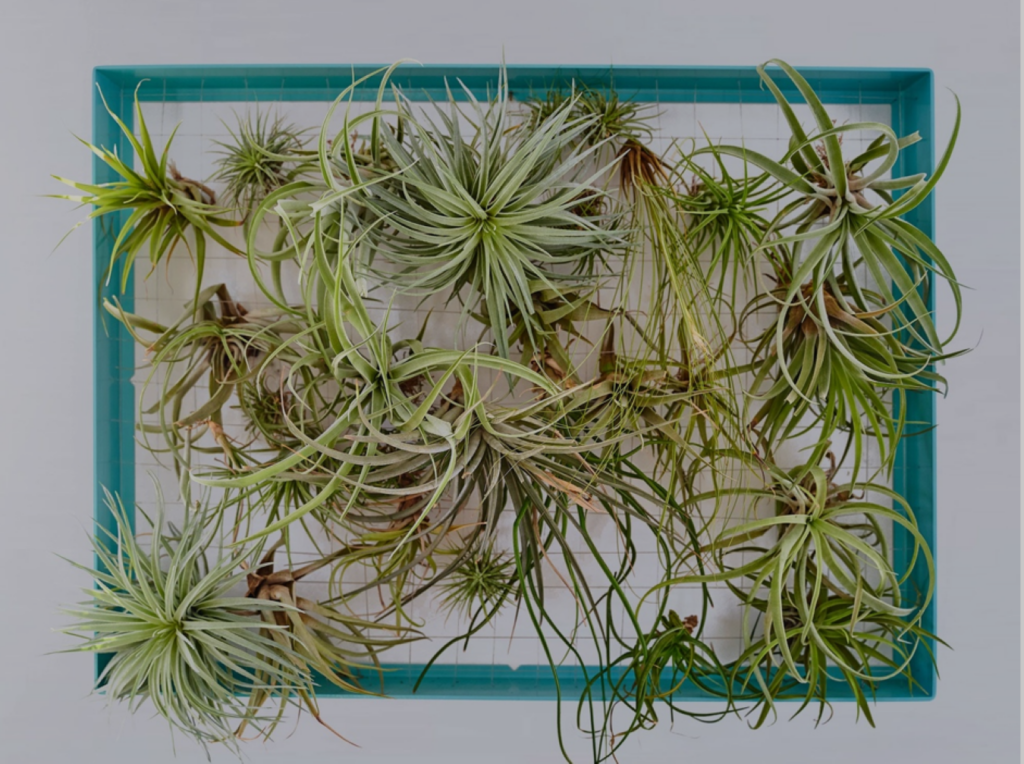
Air Plant Display Design
Air plants, or Tillandsias, are celebrated for their ability to add a natural and modern touch to interior design without the need for soil. They thrive by absorbing nutrients from the air, allowing diverse and creative display options.
Displaying air plants on objects that mimic their native habitat, such as Cholla Wood or Forest Moss, creates a desert-oasis feel that is visually appealing and easy to maintain.
Additionally, repurposing glass bottles filled with Soft Glass Pebbles and Sea Glass topped with White Reindeer Moss not only recycles materials but also provides the necessary humidity for air plants in drier environments.
Air Plant Display Species
The versatility of air plants allows them to be paired beautifully with mosses and other houseplants, enhancing the overall aesthetic and humidity levels around them.
Popular display choices include the Xerographica and Tillandsia Tectorum Ecuador, particularly striking when arranged in ceramics or as part of a moss wall. These setups complement the air plants’ unique forms and support their growth by simulating aspects of their natural environments.
Air Plant Display Maintenance
Maintaining an air plant display involves ensuring adequate humidity and avoiding direct sunlight to prevent the plants from drying out. Terrariums with an open design are ideal as they increase humidity while allowing for good airflow, which is crucial for the health of mesic air plants that require higher humidity levels.
Regular misting of moss and air plants, especially in arrangements like moss walls or when paired with other houseplants, helps maintain the necessary moisture levels and keeps the display vibrant and thriving.
Moss Garden

Moss Garden Design
In designing a moss garden, the allure of moss’s colour-saturated sumptuousness is undeniable, especially when encountered in natural settings like a velveteened log or emerald-draped statuary.
The design must account for the moss’s need for shade or semi-shade and a consistent source of ambient moisture. Experts recommend using netting in the fall to manage fallen leaves, ensuring the moss remains healthy and vibrant.
Moss Garden Species
Selecting the right species is crucial for a successful moss garden. Rock cap moss (Dicranum) prospers in deep shade and is ideal for covering rocks and boulders. Hair cap moss (Polytrichum commune) and cushion moss (Leucobryum glaucum) adapt well to partial sun and shady conditions, respectively, with cushion moss preferring sandy soils.
Sheet moss (Hypnum), known for its dense green mats, thrives in deep shade and is excellent for use between stepping stones or as a low-lying ground cover.
Moss Garden Maintenance
Maintaining a moss garden requires less effort compared to traditional grass lawns. It involves keeping the area free of weeds and debris, as mosses are nonvascular and absorb nutrients and moisture through their leaves. Regularly clearing the garden of leaves and ensuring that weeds do not encroach are essential steps to maintain the health and aesthetics of the moss garden.
Moss is resilient against compacted soil, does not require pesticides, and can endure drought and cold by going dormant under less favourable conditions.
Bamboo Garden
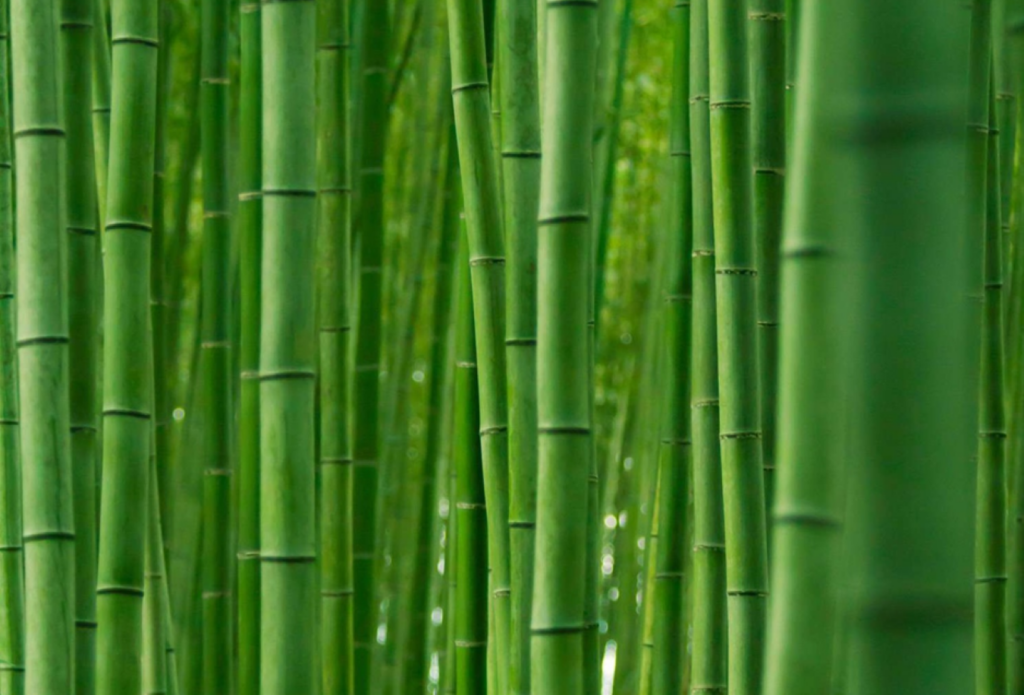
Bamboo Garden Design
Designing a bamboo garden involves careful consideration of spacing and environmental needs. Bamboo should be spaced 3-5 feet apart to form a dense screen, with wider intervals recommended for those seeking a full-sized grove rather than a dense screen.
Strategic placement enhances both privacy and aesthetic appeal, allowing for a tranquil garden oasis or a natural privacy barrier. Additionally, incorporating elements like bamboo fencing or trellises can add structural beauty and support for the plants.
Bamboo Garden Species
Bamboo, known scientifically as Bambusa vulgaris, thrives in various conditions, but most large bamboo do best with at least five hours of direct sunlight daily. Species like Phyllostachys are known for their rapid growth, achieving significant yearly height increases.
For gardeners interested in less invasive options, clumping varieties such as Fargesia and Thamnocalamus are recommended, as they do not spread aggressively and are suitable for smaller spaces or container gardening.
Bamboo Garden Maintenance
Maintaining a bamboo garden requires regular pruning and attention to the plant’s spreading nature. Effective control methods include annual root pruning and barriers to prevent rhizome spread.
Additionally, bamboo benefits from mulching and regularly removing older canes to encourage new growth and maintain plant health. Ensuring adequate water and nutrient supply is crucial, especially during the growth season, to support the rapid development of new shoots.
Seasonal Flower Rotation
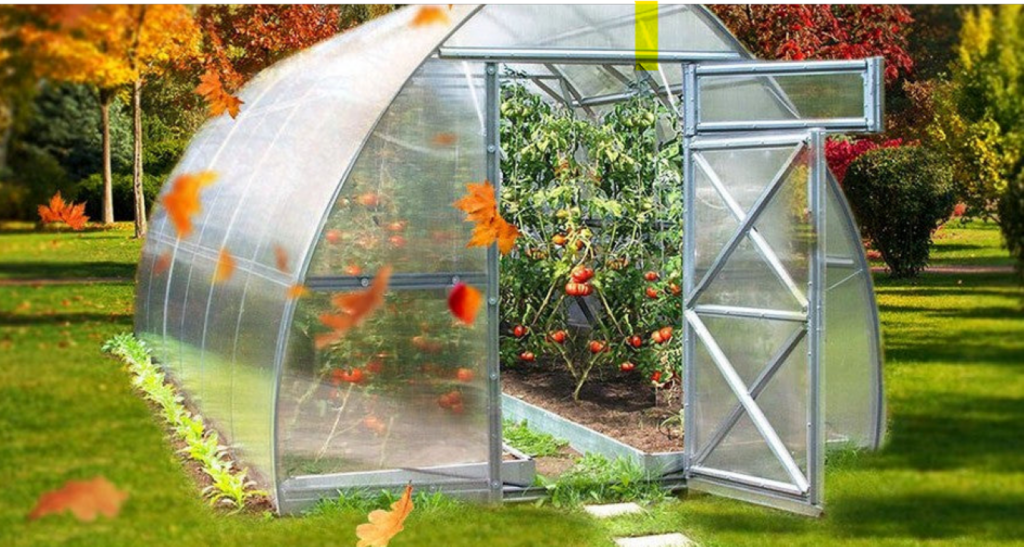
Seasonal Flower Rotation Design
Seasonal flower rotation in a greenhouse focuses on maximizing bloom periods through strategic plant groupings. By understanding when each plant blooms, gardeners can create sequences that ensure continuous floral displays.
This method involves grouping plants that either bloom simultaneously or one after another, thus extending the visual appeal and enhancing the overall garden experience.
Seasonal Flower Rotation Plants
Key to a successful seasonal flower rotation is the selection of plants with overlapping or sequential blooming periods. For example, integrating Cornus Florida and Kousa dogwood trees can double the bloom period in spring, as one starts blooming right after the other.
Additionally, incorporating plants like azaleas, rhododendrons, and early-blooming perennials such as bleeding hearts and violets can complement these trees and extend the garden’s seasonal interest.
Seasonal Flower Rotation Maintenance
Maintaining a vibrant seasonal flower rotation requires careful planning and monitoring of bloom sequences.
Gardeners should be vigilant in observing the growth patterns and health of the plants to ensure that each variety performs well and transitions smoothly into the next blooming period.
This might involve adjustments in care practices or even modifying plant groupings as needed to optimize the display and health of the garden.
Aquatic Plant Pond
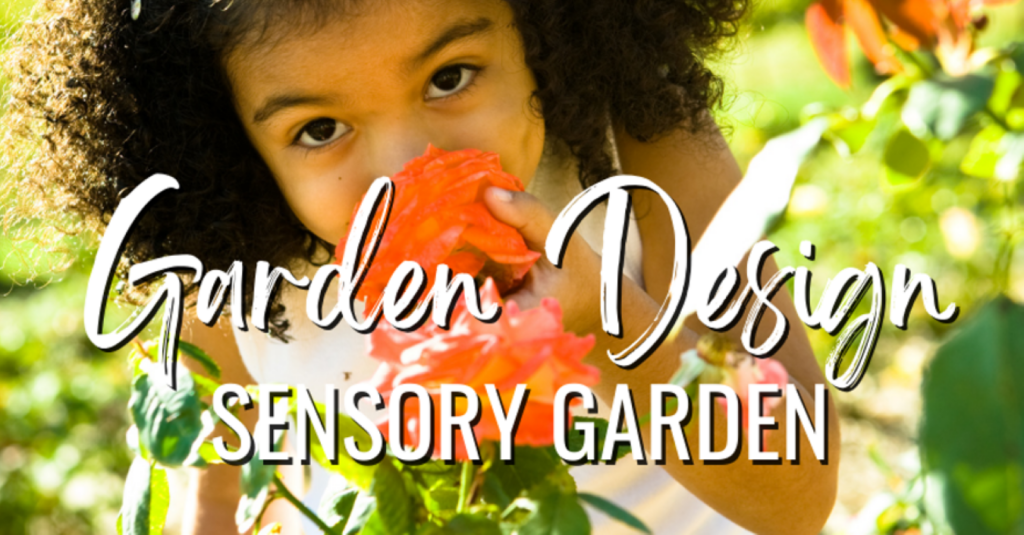
Aquatic Plant Pond Design
Designing an aquatic plant pond involves careful consideration of plant types and their roles within the pond’s ecosystem.
Aquatic plants are not only vital for maintaining water quality but also provide a habitat for pond life, help control algae, and add aesthetic value to your landscape.
The strategic placement of plants ensures they receive adequate sunlight and do not overshadow each other, which could impede their growth.
Aquatic Plant Pond Species
The selection of species is crucial for a thriving aquatic plant pond. Plants like Water Poppies, Dwarf Cattails, Corkscrew Rush, Moneywort, Yellow Iris, Thalia, Water Hyacinth, Water Lettuce, Water Lilies, Lotus, and Cabomba are recommended for their ability to filter pollutants, provide oxygen, and prevent erosion by stabilizing the pond’s banks with their roots—these favourable beneficial insects and wildlife to the area.
Aquatic Plant Pond Maintenance
Maintaining an aquatic plant pond requires regular management to ensure a healthy and vibrant ecosystem. This includes regular pruning to maintain plant size and shape, removing dead or dying parts to prevent decay, and avoiding over-fertilization to prevent excessive nutrient buildup, which can lead to algae blooms.
Additionally, it is important to actively manage and control the spread of invasive species that can quickly take over a pond. Regular inspection of plants for signs of disease or pest infestation is crucial, as early detection can prevent widespread issues.
Carnivorous Bog
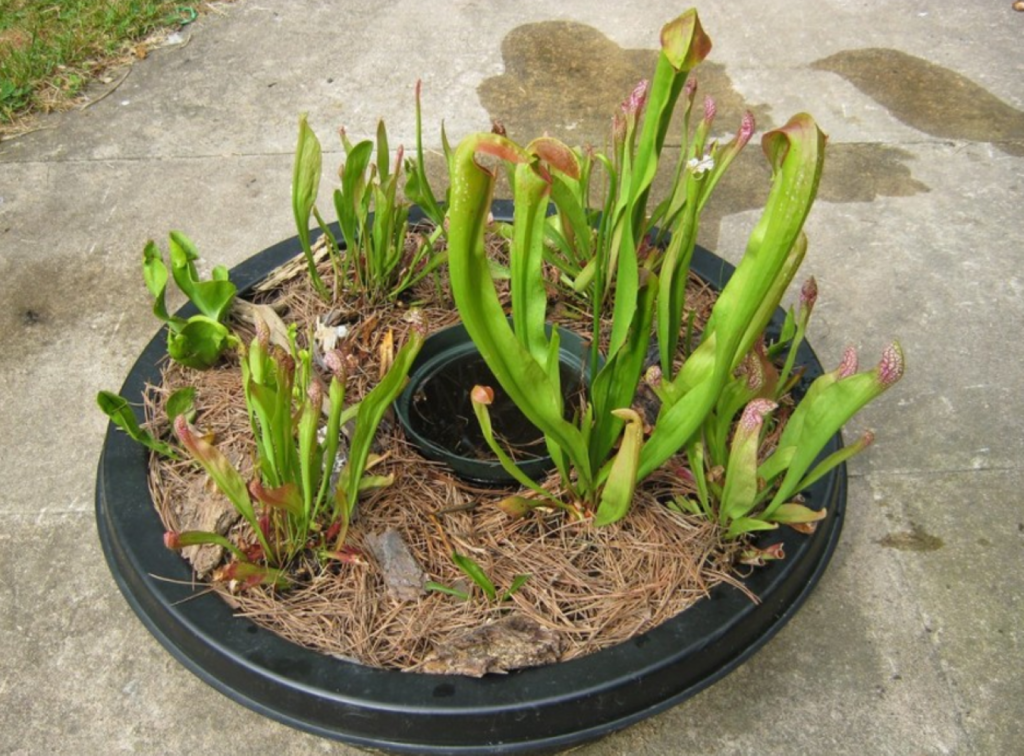
Carnivorous Bog Design
Creating a carnivorous bog garden requires careful consideration of environmental conditions and plant requirements. It’s crucial to choose a sunny location since most plants suitable for bogs thrive in full sun.
The design should incorporate a soil mixture of 50% peat moss and 50% sand to ensure proper moisture and nutrient levels. Additionally, the garden should be set up in a way that prevents flooding, which can be achieved by selecting even ground or a slightly sloped area.
Carnivorous Bog Plants
A diverse range of plants can thrive in a carnivorous bog setup, particularly those native to the Pacific Northwest. Successful species include various Sarracenia, Dionaea muscipula (Venus flytrap), multiple Drosera (sundew) species, Pinguicula (butterwort), and several Utricularia (bladderwort) species.
These plants generally require similar care, making them ideal companions in a bog environment. When arranging the plants, it’s important to place them randomly rather than in rows and ensure smaller plants are visible and not overshadowed by larger ones.
Carnivorous Bog Maintenance
Maintaining a carnivorous bog garden involves regular upkeep to plant health and prevent issues such as fungus growth. Dead plant material should be trimmed regularly.
Watering practices vary seasonally; during summer, the bog may require frequent watering, while in winter, the natural rainfall typically suffices. Protection from heavy rain is crucial to prevent damage to the plants, and a sloped cover can be effective in shielding the plants while still necessitating regular watering.
Additionally, measures should be taken to protect the bog from pests like slugs, snails, and small mammals, which can cause significant damage.
Tropical Fruit Orchard
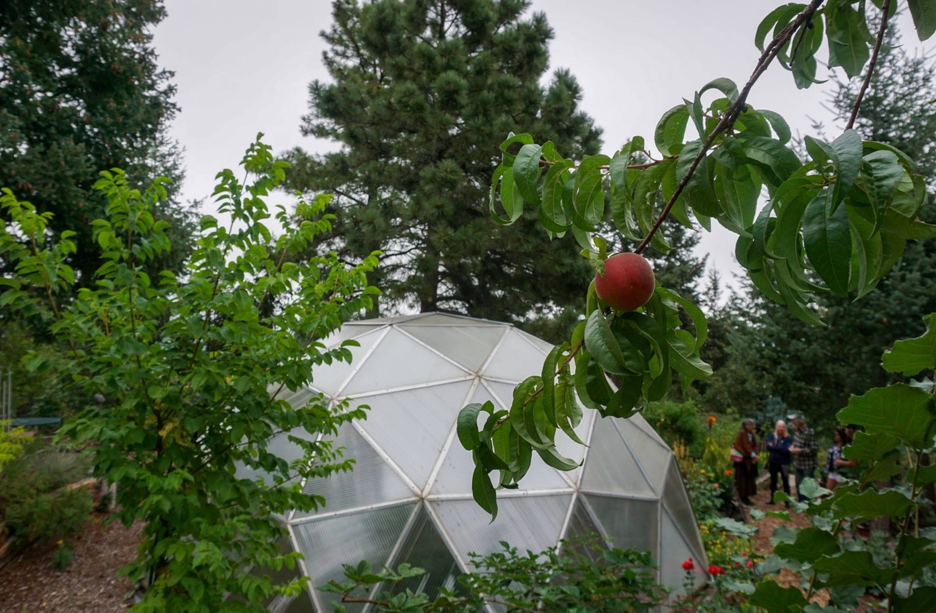
Tropical Fruit Orchard Layout
Space is a critical factor in designing a tropical fruit orchard. Each tree requires a minimum spacing of 15 , which is a critical factor in designing a tropical fruit orchard. Each tree requires a minimum spacing of 15 feet to ensure proper growth and fruiting. This layout supports the trees’ health and enhances the area’s visual appeal.
Strategic placement of tree pits, measured and edged to precision, further improves the orchard’s organization and accessibility.
Tropical Fruit Orchard Trees
The tropical fruit orchard boasts diverse fruit trees, including deciduous types like apples, pears, and stone fruits, as well as tropical varieties such as mangoes, lychees, and citrus.
This selection allows for a continuous harvest of various fruits across different seasons. Each tree is planted in nutrient-rich soil, enhancing its growth and fruit production.
Tropical Fruit Orchard Maintenance
Maintaining a tropical fruit orchard involves meticulous care, particularly in managing soil nutrition and tree health. Regular https://www.themarthablog.com/2018/09/orchard-maintenance.html.
Conclusion
Having journeyed through the lush and varied landscapes of green house gardens—from hydroponic innovations to tropical rainforests, and even to specific themes like a Mediterranean garden or a carnivorous bog.—it clearly serves as inspiration and ideas presented not only as inspiration but also highlights the importance of thoughtful design, plant selection, and maintenance to achieve a thriving garden.
These were designed to provide aesthetic beauty and practical benefits, offering sustainable methods to cultivate diverse plant life in controlled environments year-round. In essence, these green house garden inspirations underscore the profound connection between humans and nature, encouraging us to explore and embrace the art of gardening in our own spaces.
Whether you’re drawn to the serene beauty of a hanging garden, the exotic allure of a tropical fruit orchard, or the simplicity of a cactus desert, there’s a green house garden idea suited to every preference and requirement.
By considering the unique, even transform a simple greenhouse into a living masterpiece that offers solace, sustenance, and a vibrant showcase of nature’s bounty.
FAQs
1. How can I enhance the appearance of my greenhouse?
Consider installing battery-powered fairy lights inside lanterns or around various areas to make your greenhouse more visually appealing.
String lights can create a cosy French bistro atmosphere; even functional grow lights can contribute to the overall ambience. Choosing a stylish ceiling light can also significantly enhance the charm and beauty of the space.
2. What is the optimal layout for a greenhouse?
A greenhouse layout with a single aisle running down the centre is usually most efficient when the structure is 8, 10, or 12 feet wide.
A width of 10 feet is often considered ideal as it allows for placing 3-foot-wide benches on both sides of a 3-4-foot cosy wide aisle, providing ample space for plants to extend beyond the benches.
3. What types of furniture are suitable for a greenhouse?
In a greenhouse, it’s advisable to use benches and shelves with a non-solid top to facilitate water drainage from the plants. Furniture at table or counter height is preferred for ease of working with plants.
Additionally, mounting narrower shelves higher up can be helpful for 4-foot storing lighter items like tools, labels, markers, and sprays, keeping them accessible yet out of the way.
4. What are some alternative uses for a greenhouse?
Beyond plant cultivation, a greenhouse can serve as a cosy place with a non-solid top to facilitate water drainage from the plants. Furniture at table or counter height is preferred for ease of working with plants. Additionally, mounting narrower shelves higher up can be helpful for retreat during the fall and winter months.
It offers a unique space to enjoy fresh air and sunlight while engaging in activities such as drinking hot cocoa, carving pumpkins, or reading, thus extending its utility beyond traditional gardening.
- Growing Bonsai: Tips for Miniature Tree Enthusiasts
- Buying Bonsai: Tips for Selecting Your Perfect Tree
- Bonsai Potting: Essential Tips for Tree Care Success
- Bonsai Maintenance: Essential Care for Tiny Trees
- Mastering the Art of Shaping Bonsai: A Beginner’s Guide
Source 02: Forest Moss

